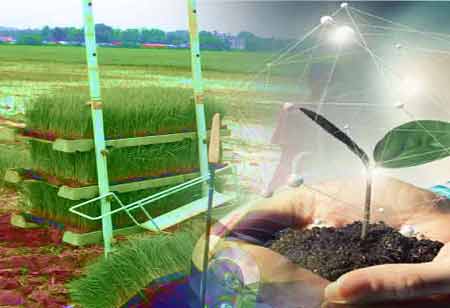Thank you for Subscribing to Agri Business Review Weekly Brief
How Artificial Intelligence is Used in Aquaculture
Aquaculture is the commercial cultivation of aquatic animals and plants in various water environments.

By
Agri Business Review | Monday, July 31, 2023
Stay ahead of the industry with exclusive feature stories on the top companies, expert insights and the latest news delivered straight to your inbox. Subscribe today.
Some of the commonly used AI applications are Automated Feeding Systems, Growth Statistics, The use of Smart Sensors, and Big Data Analytics.
FREMONT, CA: Aquaculture is the commercial cultivation of aquatic animals and plants in various water environments. Aquaculture is much more than simply breeding and harvesting fish, as most people believe. It requires a variety of techniques and more complex processes to breed a better lot of aquatic organisms and comply with the current standards. In order to take care of the livestock, advanced technology and related equipment must be used around the clock.
The following are some applications of AI in aquaculture:
Monitoring and maintenance via remote access: In aquaculture, AI allows the cultivator to monitor and maintain the farming location remotely. In this case, the farmer was alerted about any blockages, exhaustion of food supplies, or other concerns that needed to be addressed immediately.
Remote monitoring and maintenance enable farmers to freely roam around while monitoring their aquaculture sites accurately. AI has made it unnecessary to constantly be present on the field.
Temperature Optimization: Freshwater aquaculture provides a place for experimentation and adjusting the conditions to determine what affects livestock culturing. The temperature must be discussed in light of this.
The temperature plays a big role in keeping the thermal environment around the fish optimal and balanced. In order to optimize temperature based on farmer's preferences and extract customized models, AI, and machine learning algorithms can be used.
Farmers can use AI to reduce daytime temperatures under the sun while increasing nighttime temperatures.
Regulation of water quality: The use of AI in aquaculture also has the advantage of being able to detect and regulate water quality easily. A very important factor that determines the health and survival of livestock is water quality.
AI sensors can easily inform a farmer if any foreign particles are contaminating the fish's water and lead to regulatory action. Filtering the water, replacing the water, or even releasing antibodies will nullify the effect of contaminants. Using AI in aquaculture makes the industry very advanced and progressive.
The use of smart sensors: House owners, bank officials, and aquaculture farmers have long used smart sensors to monitor their properties. Whenever toxin levels or oxygen levels rise, smart sensors with AI technology can alert farmers immediately. The farmer receives this real-time information within seconds so he can act quickly. For farmers, smart sensors are more of an advantage than an application since they are both useful and insightful.
Big Data Analytics: In aquaculture, AI uses big data analytics to accumulate information and assist others in taking the right steps.
By using big data, farmers will be able to understand the risks and challenges they may face in the process and ensure that they are on the right track.





